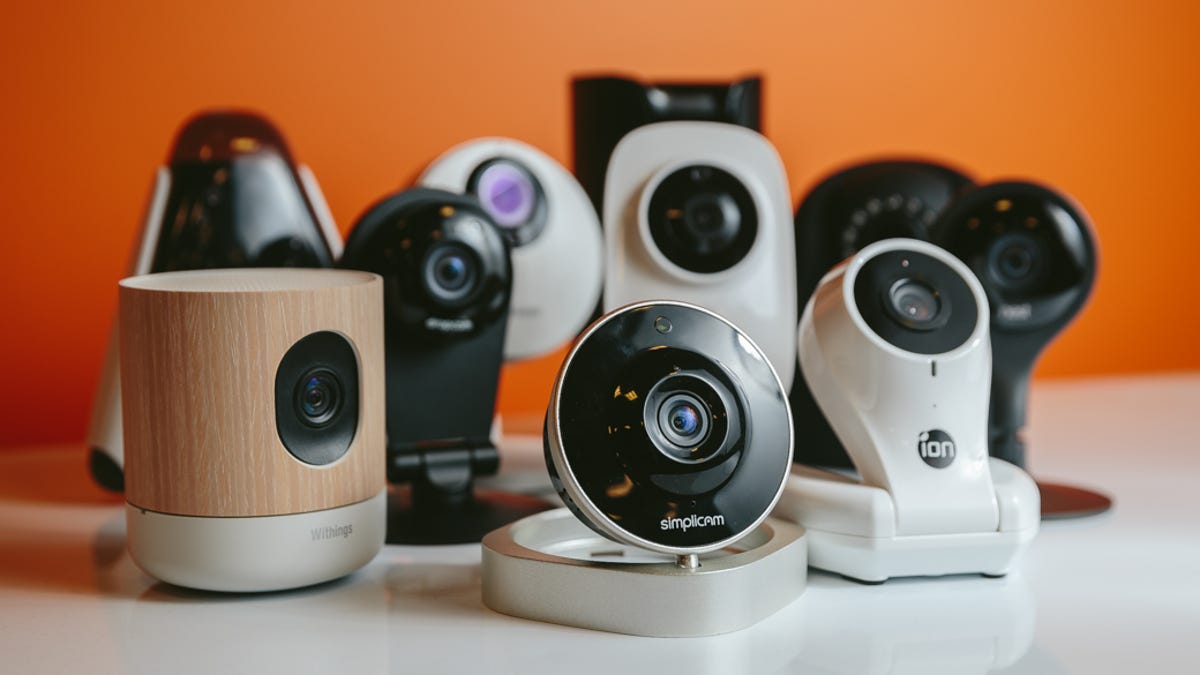Home security 101: Local vs. cloud camera storage
Shopping for a security camera can be overwhelming. Here's one thing you really need to consider before you take the plunge.

Cameras are a key component of home security, acting as your eyes and ears when you aren't home. While there are a ton of different models available on the market today with a ton of different features, one piece of this buying decision is pretty universal regardless of your other camera must-haves: video storage. But there are two main types of video storage to choose from -- local and cloud -- and they're very, very different.
Not only will selecting between local and cloud storage help narrow down your options fast, it will also help you set your priorities for your broader security system and smart home preferences down the road.
Local storage
As the name suggests, this type of video storage saves your clips and other footage locally. Compatible cameras have microSD card slots that can generally handle anywhere from 16GB to 128GB cards. Sometimes, a microSD card is included with your camera purchase; other times, you're expected to buy your own.
A 128GB microSD card and a larger SD card adapter.
Either way, here's how they work. Stick the microSD card in the camera, set your preferences in the related Android or iOS mobile app for video storage -- your options are either event-based recording (that saves clips only when the camera detects motion or sound) and continuous recording, which records everything the camera sees 24/7.
Then when your card is full, you either have the option to continue recording and overwrite the previous footage, or stop recording and manage your footage manually. Oftentimes, you can actually view saved clips in the app, but you can also remove the microSD card and stick it in a card reader (and a card adapter, if needed) if you're interested in saving videos to your computer.
This option is a favorite among folks who are concerned about privacy, since local storage puts video management in your hands. It also makes video more accessible -- just buy a microSD card and the footage is readily available to you without having to pay a monthly fee (as is common with cloud storage).
DIY cameras that offer local storage:
Cloud storage
If you aren't interested in buying a microSD card, a card reader and potentially a card adapter as well, cloud storage might be a better bet. In the same way that today's mobile phones store photos and other data on "the cloud," security companies do the same thing with the video footage from your cameras.
This method of video storage has grown in popularity in tandem with the smart home industry. With Wi-Fi-enabled cameras and sleek mobile apps, companies want to appeal to a broader base of DIY enthusiasts who would rather not bother with local storage and isn't as concerned about potential privacy concerns.
With cloud storage, your footage -- either event-based or continuous -- is sent off to remote servers. Alphabet/Google's Nest Cam, for instance, relies on cloud storage. It has its own servers and it charges you a monthly fee, starting at $10 per month for 10 days of continuous recording. In the UK, the service starts at £80/year for a 10-day video history. The US monthly rate converts roughly to AU$13 in Australia.
Many other brands offer similar subscription-based cloud storage programs and it is generally more convenient than dealing with a microSD card. Problem is, you don't have control over those remote servers, so outages can cause serious delays in accessing your saved videos -- and you can't ever be entirely sure who has access to your footage.
DIY cameras that offer cloud storage:
The tradeoff
There's no right answer here. Local storage gives you more control; cloud storage offers more convenience. It's really a matter of preference and there are plenty of models out there to suit either taste. Can't decide on one or the other? Some models, like the Ezviz Mini, actually offer both.
Of course, there are a bunch of other things to consider when you're looking at security cameras too, but video storage is really one of the first decisions you should make. It will help you narrow down the growing pool of models available today and it will help you understand the features that matter to you most.
Ready to dive deeper into the wide world of home security? Start here.

